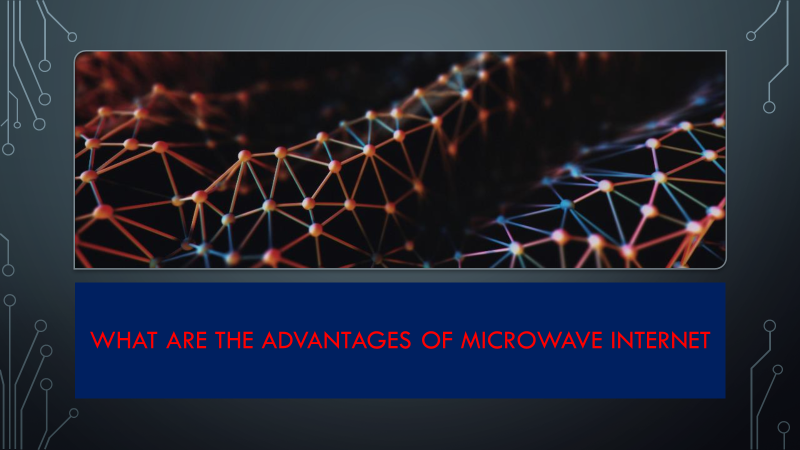Considering switching from leased lines. Then microwave Internet is a Better Choice.
“This article will outline the concept of microwave internet and its advantages and disadvantages for you.”
Microwave Internet: A Superior Solution for Rural and Underserved Areas
What is microwave internet technology?
Microwave technology uses high-frequency radio waves to provide fast wireless connections for transmitting voice, video, and data information. This technology allows for a point-to-point connection between two locations, which offers a cost-effective alternative to leased line connections. With this technology, you can establish a continuous internet connection between two points quickly and reliably.
Microwave Internet: Wireless Access (WLA)
Microwave internet connectivity is an advanced wireless solution that surpasses fiber connectivity in several ways. It utilizes robust radio waves to transmit data wirelessly, making it more reliable and efficient than traditional physical lines.
Wireless Access (WLA) or Microwave internet is a cutting-edge technology that delivers lightning-fast internet connectivity at home or office.
It is also known as radio shot, wireless Internet, or Wi-Fi link. It allows you to experience seamless connectivity without interruptions or lags.
Microwave Internet: Connectivity and Speed
It provides a reliable and stable connection that delivers high speed and sufficient bandwidth regardless of your location. This contributes to an increase in the efficiency and profitability of your business. With a microwave connection, you can attain upload and download speeds similar to those of traditional fiber-leased lines.
Depending on the requirements of your business, you can choose connection speeds ranging from 10Mbps to 10Gbps.”
Why Microwave Internet is important?
As the world evolves rapidly with the rise of digital technology, the pace of change has accelerated significantly. What once required months for delivery now happens within seconds. Modern communication tools have effectively facilitated instant connections between individuals across the globe through Internet communication.
However, it’s essential to recognize that disasters can strike unexpectedly, whether in the form of floods, hail, rain storms, road construction, fires, or other uncontrollable events that can damage the wiring system of the internet connection.
As the name suggests, you don’t need wire Internet networks. This unique wireless networking enables data transmission even in harsh weather conditions like rain, hail, snow, dust, or smoke.
Recent advancements have transformed frequency allocation, providing significant benefits and reshaping the industry.
Advantages of Microwave Internet:

| Advantage | Description |
|---|---|
| More Reliable Than a Leased Line | As the connection is wireless via microwaves, it isn't susceptible to damage from external factors like floods or road works, ensuring consistent connectivity. |
| Fast Installation | It can be installed and fully functional in just 2 weeks, as it doesn't require extensive construction. |
| Uptimes Exceeding 99.99% | It offers greater uptime compared to most leased lines, ensuring minimal disruptions to your connectivity. |
| 100% Dedicated Connection | You have a dedicated connection, meaning no other users can slow down your connection during peak hours. |
| Ultra-low Latency | Ideal for real-time applications such as video conferencing, VoIP calls, and gaming due to its ultra-low latency. |
| Lightning-fast Speeds | Offers symmetrical upload and download speeds ranging from 100Mbps to 10Gbps, tailored to meet business requirements. |

